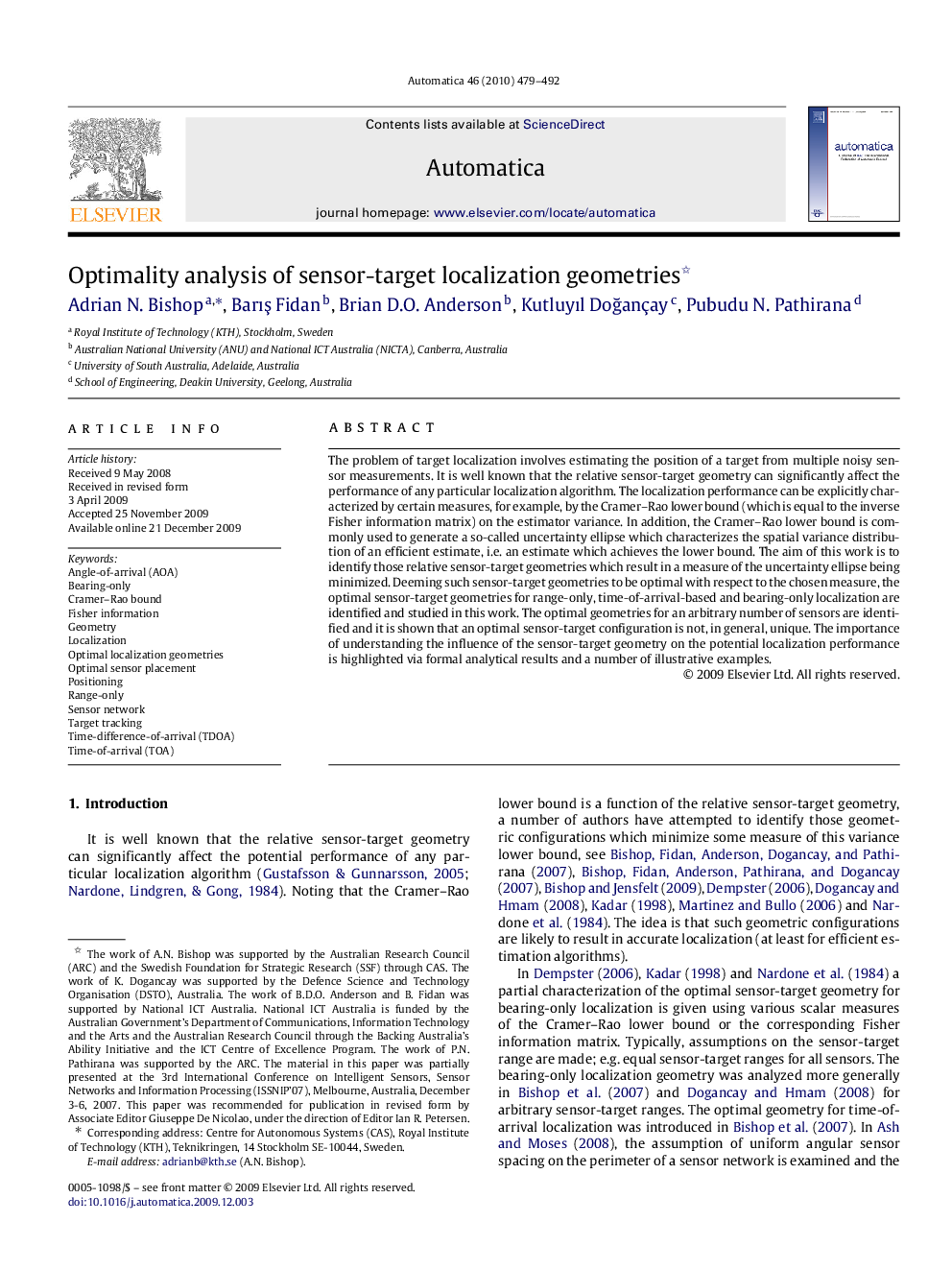| کد مقاله | کد نشریه | سال انتشار | مقاله انگلیسی | نسخه تمام متن |
|---|---|---|---|---|
| 696807 | 890349 | 2010 | 14 صفحه PDF | دانلود رایگان |

The problem of target localization involves estimating the position of a target from multiple noisy sensor measurements. It is well known that the relative sensor-target geometry can significantly affect the performance of any particular localization algorithm. The localization performance can be explicitly characterized by certain measures, for example, by the Cramer–Rao lower bound (which is equal to the inverse Fisher information matrix) on the estimator variance. In addition, the Cramer–Rao lower bound is commonly used to generate a so-called uncertainty ellipse which characterizes the spatial variance distribution of an efficient estimate, i.e. an estimate which achieves the lower bound. The aim of this work is to identify those relative sensor-target geometries which result in a measure of the uncertainty ellipse being minimized. Deeming such sensor-target geometries to be optimal with respect to the chosen measure, the optimal sensor-target geometries for range-only, time-of-arrival-based and bearing-only localization are identified and studied in this work. The optimal geometries for an arbitrary number of sensors are identified and it is shown that an optimal sensor-target configuration is not, in general, unique. The importance of understanding the influence of the sensor-target geometry on the potential localization performance is highlighted via formal analytical results and a number of illustrative examples.
Journal: Automatica - Volume 46, Issue 3, March 2010, Pages 479–492